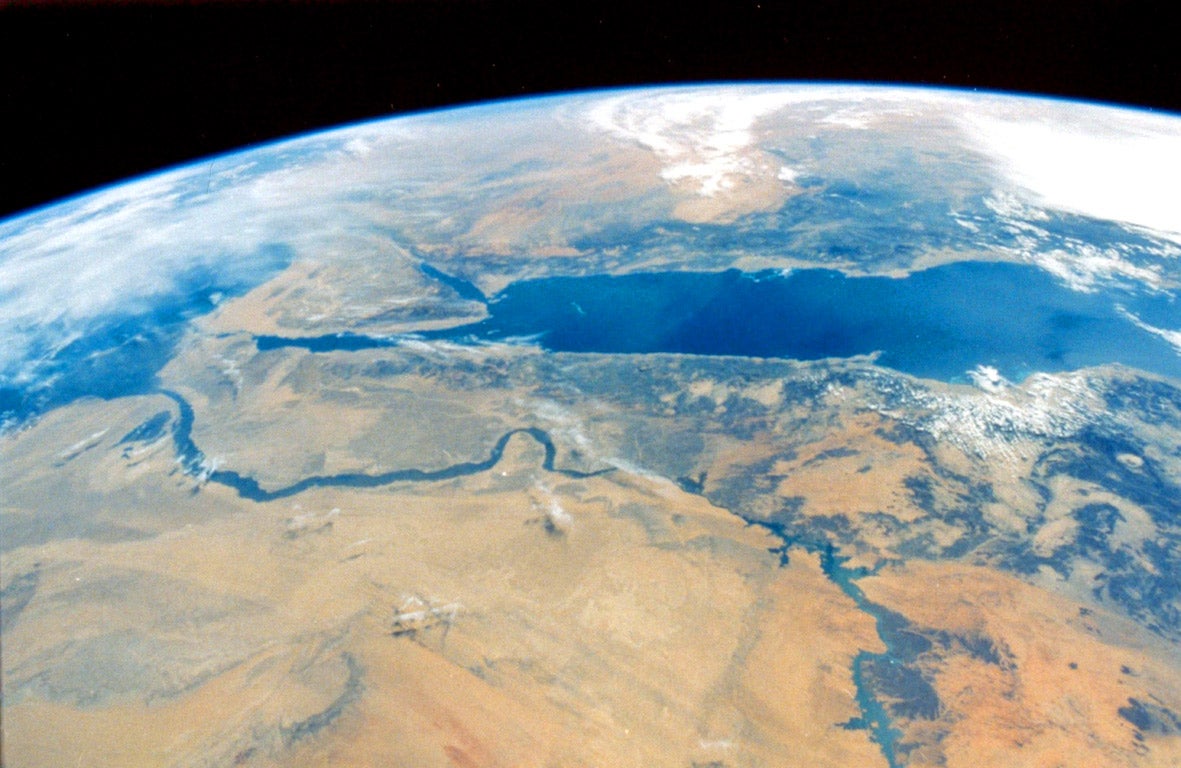The good news: Earth can support life for 1.75bn years. The bad news: Climate change could wipe us out first
Scientists calculate planet’s leave-by date, and identify other worlds where life may develop

The end of the world is coming – but not for a while yet. That’s according to a new study indicating that we have 1.75 billion years left until Mother Earth gives up the ghost.
Researchers from the University of East Anglia’s School of Environmental Sciences analysed other planets outside our galaxy in an attempt to work out how long it will be before our planet becomes uninhabitable.
The study, published today in the journal Astrobiology, examined seven planets, including Earth, to determine how their “habitable zones” will change as their stars get hotter and brighter over time.
The key factors in determining a planet’s habitability are whether it is the correct distance from its star to have liquid surface water and a temperature less than 50C.
“Within around 1.75 billion years conditions for human life will become impossible as the sun grows in size, temperatures soar and the world’s oceans evaporate,” Andrew Rushby, who led the study, told The Independent.
The research didn’t specifically account for man-made climate change or the “possibility that we’ll all be wiped out by an asteroid or a nuclear war”, he said. Climate change may well decimate humanity before the concept of habitable zones become relevant.
“Of course, conditions for humans and other complex life will become impossible much sooner – and this is being accelerated by anthropogenic climate change,” he said.
“Humans would be in trouble with even a small increase in temperature, and near the end only microbes in niche environments would be able to endure the heat.”
Even if some humans did manage to survive for another 1.75 billion years, the end would not come instantly.
“Even if you were alive at 99.9 per cent of the way through our habitable zone, you still wouldn’t have to worry about it,” Mr Rushby said. ”Life isn’t going to be extinguished at the flick of a switch.”
Instead, as the sun gets older, it will get hotter and temperatures on Earth will soar over the course of “perhaps one million years” as we enter a “hot zone” and seas evaporate, leaving the planet lifeless except for some forms of microscopic life.
“The optimist in me hopes we’ll still be around to see this,” said Mr Rushby. “Or that we’ll have migrated to Mars or developed the technology to spread out across the galaxy. But that’s getting into the realms of science fiction.”
The study has also allowed Mr Rushby and his team to make predictions about what stage life might be at in other parts of the galaxy: “There’s no point in studying a planet for signs of life if it’s only been habitable for a million years. That sounds like a long time, but in terms of geology and biology it isn’t. The most interesting planets in the search for alien life are ones that have been habitable for billions of years.
“Anatomically modern humans have only been around for the last 200,000 years – so you can see it takes a really long time for intelligent life to develop.
“Of course, much of evolution is down to luck, so this isn’t concrete, but we know that complex, intelligent species like humans could not emerge after only a few million years because it took us 75 per cent of the entire habitable lifetime of this planet to evolve.
”We think it will probably be a similar story elsewhere.”
In particular, the report points to the examples of Kepler-22b and Gliese-581d which have been habitable for up to 6 and 54.7 billion years respectively.
“As it stands, we don’t have the technology to explore these planets to discover if there is alien life, but I’d certainly mention Kepler-22b and Gliese-581d as planets that we should keep an eye over the next two or three hundreds years of human existence as our technology develops,” said Mr Rushby.
Join our commenting forum
Join thought-provoking conversations, follow other Independent readers and see their replies
Comments